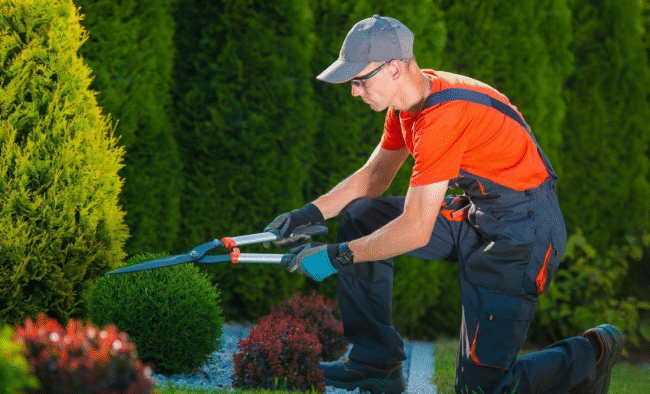The Real-World Problem
You live in an apartment or a condo. Scraps pile up on the counter, and the trash fills with onion skins, coffee grounds, and stale bread. If you throw them away, they end up in a landfill where they rot without oxygen. That’s where methane is made — and methane is no small problem. The EPA estimates that over half of landfill methane emissions come directly from food waste.
On the other hand, if you can capture those scraps and let biology work as it’s meant to — oxygen, microbes, worms, and time — you’ll turn a problem into a resource. Even if you’ve only got a kitchen corner, you can do this.

The Principle: Compost Is a Living System
Let’s think this through before we buy a fancy bin or drill holes in a tote. Composting works because of a balance:
- Carbon and nitrogen (the browns and greens).
- Moisture (not soggy, not bone-dry — like a wrung-out sponge).
- Airflow (oxygen in, gases out).
- Microbes and in some cases worms (the workforce).
Ignore one leg of that stool, and it tips. Get them in balance, and the system runs quietly in the background, no backyard required.
Method 1: Vermicomposting (Red Worms in a Bin)
The old guys figured this out long before Pinterest: let worms do the heavy lifting. Eisenia fetida, the red wiggler, thrives in bins no bigger than a plastic tote.
Step-by-Step:
- Prepare the bin. Drill ⅛-inch holes for air and drainage. Set a tray or shallow pan underneath to catch drips.
- Add bedding. Shredded newspaper, cardboard, or coco coir moistened to sponge consistency.
- Add worms. One pound of red wigglers will handle about half a pound of food scraps a day.
- Feed small. Bury scraps under bedding to avoid fruit flies. Stick to veggie peels, coffee grounds, and bread — no meat, dairy, or oily foods.
- Harvest castings. Every few months, move finished compost to one side, add new bedding and food to the other. The worms will migrate, leaving rich black castings behind.
Professional Wisdom: If your bin smells, something’s wrong. Usually it’s too wet or too much food. Back off, add dry bedding, and let the system reset.
Method 2: Bokashi (Fermentation in a Bucket)
Bokashi isn’t compost in the traditional sense. It’s a fermentation step. You collect scraps in an airtight bucket, sprinkle them with inoculated bran (EM — “effective microorganisms”), and press them down to keep air out.
In two weeks, you’ll have a bucket of “pre-compost” — acidic, partially fermented scraps. That material can then be buried in soil, mixed into a community compost pile, or handed off to a garden project. The liquid that drains (bokashi “tea”) can be diluted and poured on plants or down the drain.
Why it works indoors: airtight lid, minimal smell, and it can handle meat and dairy.
Where it goes wrong: if you don’t finish the process in soil, it’s incomplete. This is a two-stage system.
Method 3: Electric Composters (Grinders/Dehydrators)
The ads make it look easy: push a button, get “compost” overnight. Here’s the truth — these machines dry and grind scraps. They do not complete the biology. The powder they make still needs to be finished by microbes, either in soil or in a compost pile.
Pros: neat, fast, no bugs.
Cons: expensive, power-hungry, and not the full system.
Respect the tool for what it is, but don’t be fooled into thinking it replaces time and biology.
Method 4: Community Composting
Sometimes the smartest move is not to keep it all in your kitchen. Many cities now run curbside compost pickup or host drop-off bins. New York City’s program has diverted millions of pounds already. San Francisco requires it. If you’re short on space or time, check your local waste authority — the infrastructure might be closer than you think.
Odor, Flies, and Neighbors: Controlling the System
This is where most people give up. But the problems have simple fixes:
- Odors: too wet or too much nitrogen. Solution — add dry bedding, aerate, slow down feeding.
- Fruit flies: always bury scraps, freeze them first if needed, and keep a tight-fitting lid.
- Worms escaping: usually means the bin is too acidic or hot. Add crushed eggshells, fluff bedding, and reduce feed.
Remember: “Fast is slow if you have to redo it.” Rushing more scraps in only creates a mess you’ll have to clean later.
Where the Finished Compost Goes
Without a backyard, what do you do with the finished product?
- Houseplants: top-dress with a thin layer or mix 10–20% vermicompost into potting soil.
- Balcony planters: feed containers without buying synthetic fertilizer.
- Community gardens: many gladly accept finished worm castings or bokashi pre-compost.
This is where Gardening for Beginners often starts — learning that healthy soil is built, not bought. Compost, even from a small bin, is the foundation.
Costs, Space, and Time: Trade-Offs
- Vermicomposting: cheapest, small footprint, weekly upkeep.
- Bokashi: compact, fast, but you’ll need to buy inoculated bran and have a place for stage two.
- Electric units: easy, no bugs, but high upfront cost and still needs finishing.
- Community options: lowest effort, but depends on local infrastructure.
Every method has a cost. There are no magic bullets. The right choice is the one you’ll actually stick with.
Lessons From the Field
I’ve seen more than one jobsite dumpster filled with perfectly compostable scraps — lunch leftovers, cardboard, sawdust. That’s wasted potential. The same lesson applies at home. Respect the material, respect the system, and it’ll pay you back in soil and in principle.
Old-timers didn’t call it “composting.” They just fed the soil with what they had. Our job is to honor that wisdom with the tools and space we’ve got today.
Conclusion
You don’t need a backyard to compost. You need a system that fits your life and a respect for the biology that makes it work. Whether it’s worms in a bin, a bokashi bucket, or a community drop-off, the principle is the same: turn waste into resource.
Ask yourself: will this system still be running quietly three months from now? If the answer is yes, you’ve found your method. If not, adjust until it’s something you can live with.
In the end, composting at home isn’t about being trendy. It’s about responsibility — to the soil, to the community, and to the generations who’ll live with what we leave behind.
